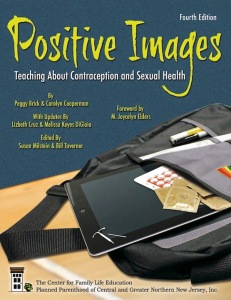Today marks two very special birthdays: The first birth control clinic in the United States (98 years old) and my younger daughter (10 years old).
It’s pretty amazing to think that in two short years birth control clinics will only be 100 years old – and my girl will already be 12. Time is both very, very long and very, very short.
Birth control is such an integral part of the culture in the United States that to conceptualize life without it is difficult for most people – it certainly is for me. I hope that my daughter will never know life without the right to make her own reproductive choices, free from financial, interpersonal, religious, medical, or other types of coercion.
You can bet your birth control clinic that my daughters and I will be celebrating access to contraceptives as we celebrate my younger daughter’s arrival. The creation of life, holding little ones, is such a precious gift when it’s a thoughtful and joyfully welcomed process. I can’t imagine the pain that would be intrinsic to the process of pregnancy and birthing when it is felt as a burden.
The first clinic was opened by Margaret Sanger, and as is clear in the flier she printed up to advertise her new agency, much of what she saw a need to address was the financial strain that large families put on parents. The bulk of the financial burden of children falls on mothers more than it does on fathers – and that’s clearly how it’s been for a long time. Sanger’s fliers don’t address fathers at all.
While I have only two girls myself, I educate people of all genders. And so I’m happy to present this lesson from Positive Images, aimed at everyone:
IT’S YOUR RIGHT:
How to Access Reproductive Health Services
By Sue Montfort and Joan O’Leary
Objectives:
By the end of this lesson, participants will be able to:
Identify common concerns about using sexual health services.
Identify situations in which sexual health services would be helpful.
Explain how to find and get to appropriate sexual health services in their community.
Rationale:
Young people frequently lack the knowledge, experience, and comfort level to access health case services. This lesson increases their familiarity with family planning services, often their entry point for other health care. They need to develop the skills required to find, contact, and negotiate with agencies, institutions, or individuals that provide sexual health case. This lesson breaks down some of the barriers that may prevent a person from accessing the health services s/he needs.
_____________________________________________________________________
Birth control clinics are no longer limited in that way – they offer sexual and reproductive health care in a much broader context now than what Margaret Sanger first conceptualized. I love the steps to reproductive health care included in the lesson because of its gender neutrality:
- Identify the need or problem.
- Find out where to get help.
- Find out when you can go.
- Decide how to get there.
- Explain your need or problem.
- Make an appointment.
- Get ready to go.
- Go to appointment.
- Fill out any forms.
- Visit with clinician.
- Get instructions or treatment plan.
- Ask questions.
- Schedule follow-up visit (if needed).
- Pay (if necessary).
That third to last line: Ask questions. So simple, and so often left out of conversations about health care in general – sexual or not. Really, this entire list is about generalized health care as much as it is about sexual health care. Many young people haven’t really thought through how to go about getting health care – much less the steps to achieve it or that asking follow-up questions is something that’s important to the process.







